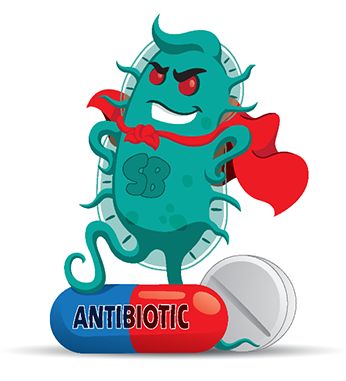Antimicrobial Resistance: A threat to Public Health
 Sekinah Oladele
Sekinah Oladele
Antimicrobial resistance (AMR) is one of the top global public health and development threats. It is estimated that bacterial AMR was directly responsible for 1.27 million global deaths in 2019 and contributed to 4.95 million deaths.
Antimicrobials – including antibiotics, antivirals, antifungals, and antiparasitics – are medicines used to prevent and treat infectious diseases in humans, animals and plants.
The misuse and overuse of antimicrobials in humans, animals and plants are the main drivers in the development of drug-resistant pathogens.
AMR occurs when bacteria, viruses, fungi, and parasites are no longer responding to medicines, making people sicker and increasing the risk of spread of infections that are difficult to treat, illness and deaths. AMR is driven largely by the misuse and overuse of antimicrobials, yet, at the same time, many people around the world do not have access to essential antimicrobial medicines.
AMR puts many of the gains of modern medicine at risk. It makes infections harder to treat and makes other medical procedures and treatments – such as surgery, caesarean sections and cancer chemotherapy – much riskier.
The world faces an antibiotics pipeline and access crisis. There is an inadequate research and development pipeline in the face of rising levels of resistance, and urgent need for additional measures to ensure equitable access to new and existing vaccines, diagnostics and medicines.
AMR is a natural process that happens over time through genetic changes in pathogens. Its emergence and spread is accelerated by human activity, mainly the misuse and overuse of antimicrobials to treat, prevent or control infections in humans, animals and plants.
AMR has significant costs for both health systems and national economies overall. For example, it creates a need for more expensive and intensive care, affects productivity of patients or their caregivers through prolonged hospital stays, and harms agricultural productivity.
Contributing factors include lack of access to clean water, sanitation and hygiene (WASH) for both humans and animals; poor infection and disease prevention and control in homes, healthcare facilities and farms; poor access to quality and affordable vaccines, diagnostics and medicines; lack of awareness and knowledge; and lack of enforcement of relevant legislation. People living in low-resource settings and vulnerable populations are especially impacted by both the drivers and consequences of AMR.
Subscribe to my newsletter
Read articles from Sekinah Oladele directly inside your inbox. Subscribe to the newsletter, and don't miss out.
Written by

Sekinah Oladele
Sekinah Oladele
BAS Public Health | SEO Health Content Creator & Educator | Data Science | Epidemiological & Geospatial Analysis Expert | Advocate for Evidence-Based Public Health | Extern Ambassador